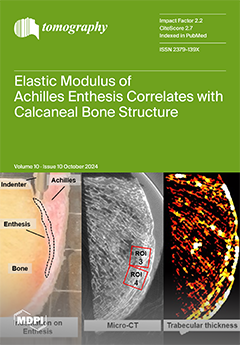Objectives: Facial fractures and associated traumatic brain injuries represent a worldwide public health concern. Therefore, we aimed to determine the pattern of brain injury accompanying facial fractures by comparing adult patients with and without facial fractures in terms of demographic, clinical, and imaging
[...] Read more.
Objectives: Facial fractures and associated traumatic brain injuries represent a worldwide public health concern. Therefore, we aimed to determine the pattern of brain injury accompanying facial fractures by comparing adult patients with and without facial fractures in terms of demographic, clinical, and imaging features. Methods: This single-center, retrospective study included 492 polytrauma patients presenting at our emergency department from January 2019 to July 2023, which were divided in two groups: with facial fractures (FF) and without facial fractures (non-FF). The following data were collected: age, sex, mechanism of trauma (road traffic accident, fall, and other causes), Glasgow Coma Scale (GCS), the evolution of the patient (admitted to a medical ward or intensive care unit, neurosurgery performed, death), and imaging features of the injury. Data were analyzed using descriptive tests, Chi-square tests, and regression analyses. A
p-value less than 0.05 was considered statistically significant. Results: In the FF group, there were 79% (
n = 102) men and 21% (
n = 27) women, with a mean age of 45 ± 17 years, while in the non-FF group, there were 70% (
n = 253) men and 30% (
n = 110) women, with a mean age 46 ± 17 years. There was a significant association between brain injuries and facial fractures (
p < 0.001, AOR 1.7). The most frequent facial fracture affected the zygoma bone in 28.1% (
n = 67) cases. The most frequent brain injury associated with FF was subdural hematoma 23.4% (
n = 44), and in the non-FF group, the most common head injury was intraparenchymal hematoma 29% (
n = 73); Conclusions: Both groups shared similarities regarding gender, age, cause of traumatic event, and outcome but had significant differences in association with brain injuries, ICU admission, and clinical status.
Full article






